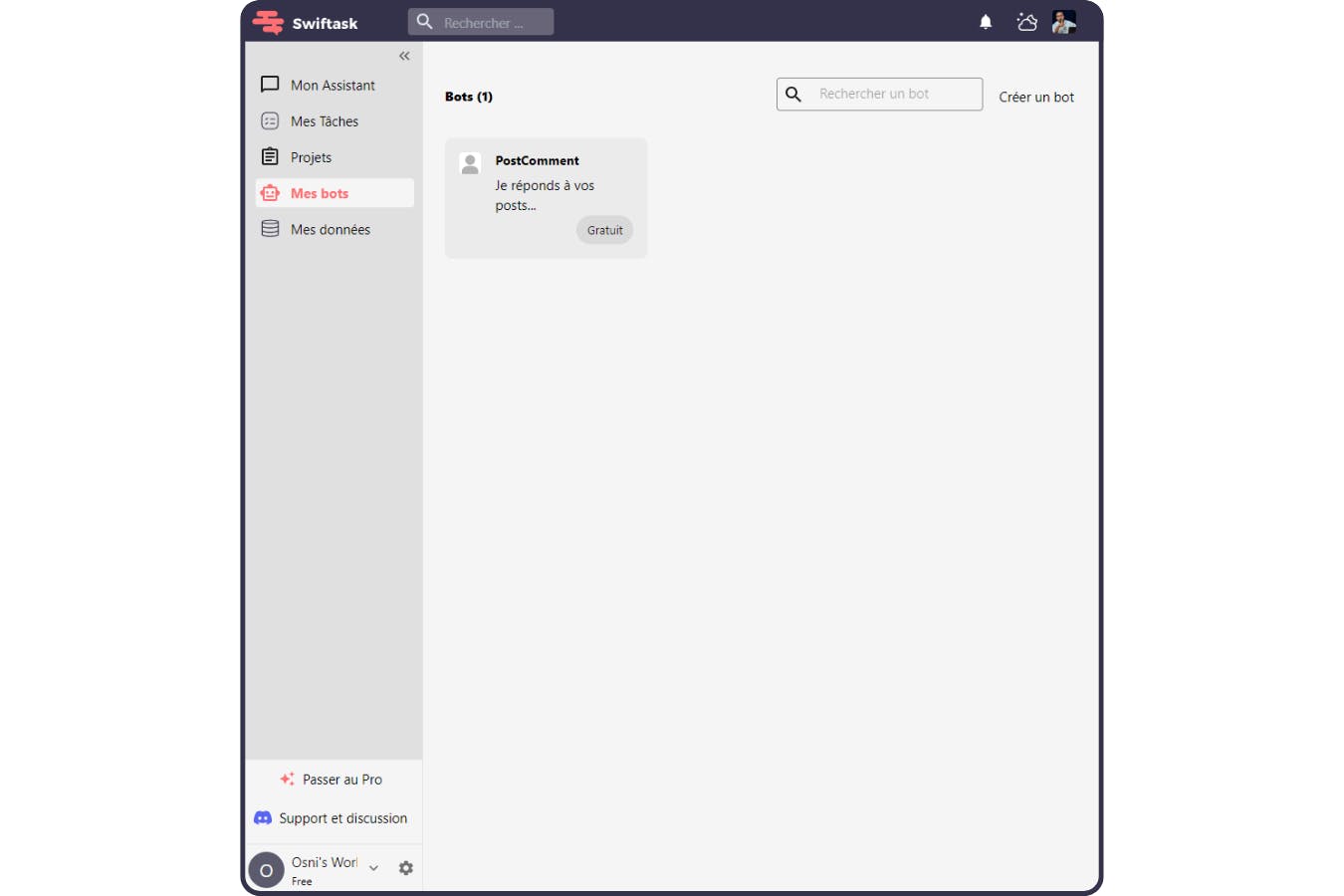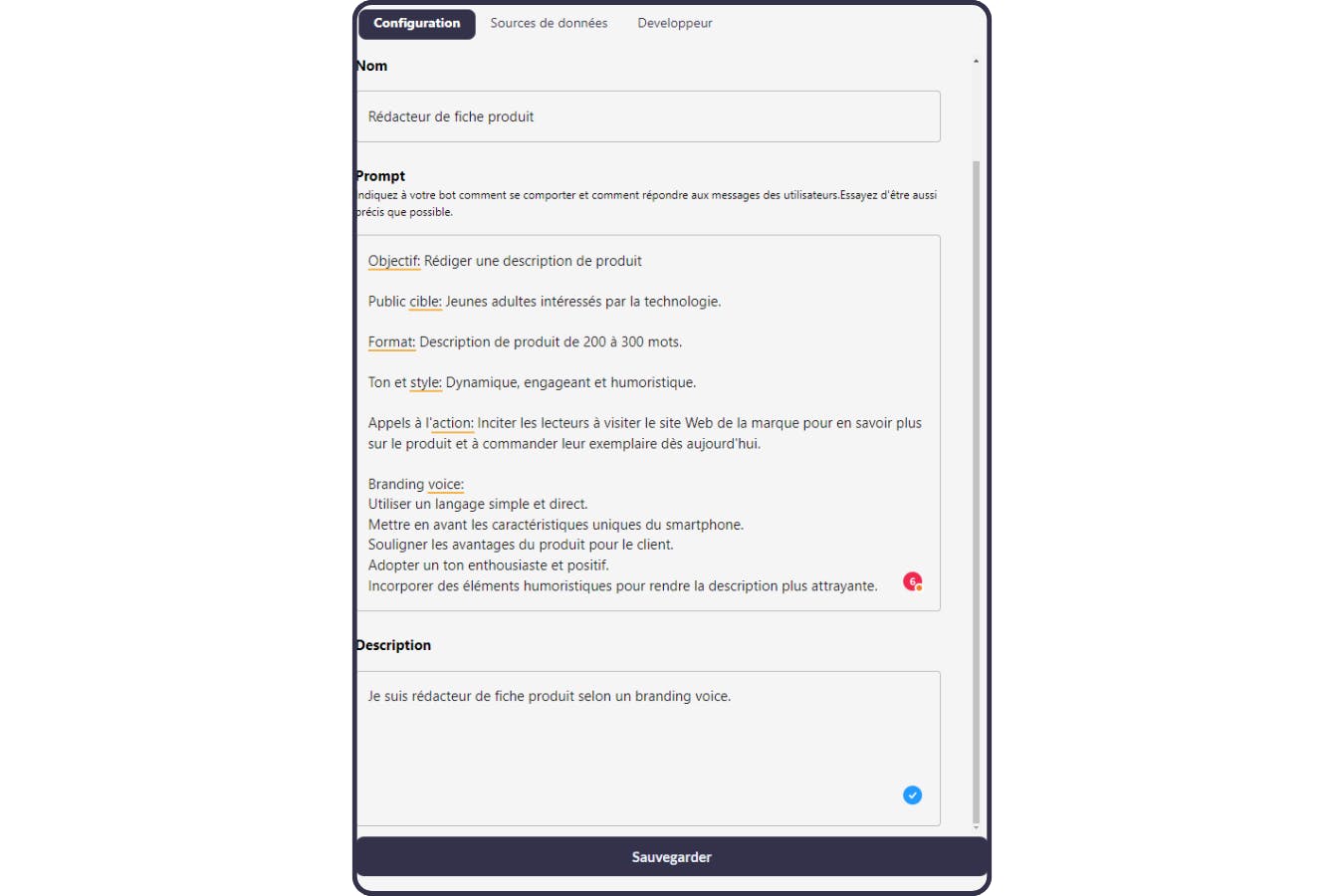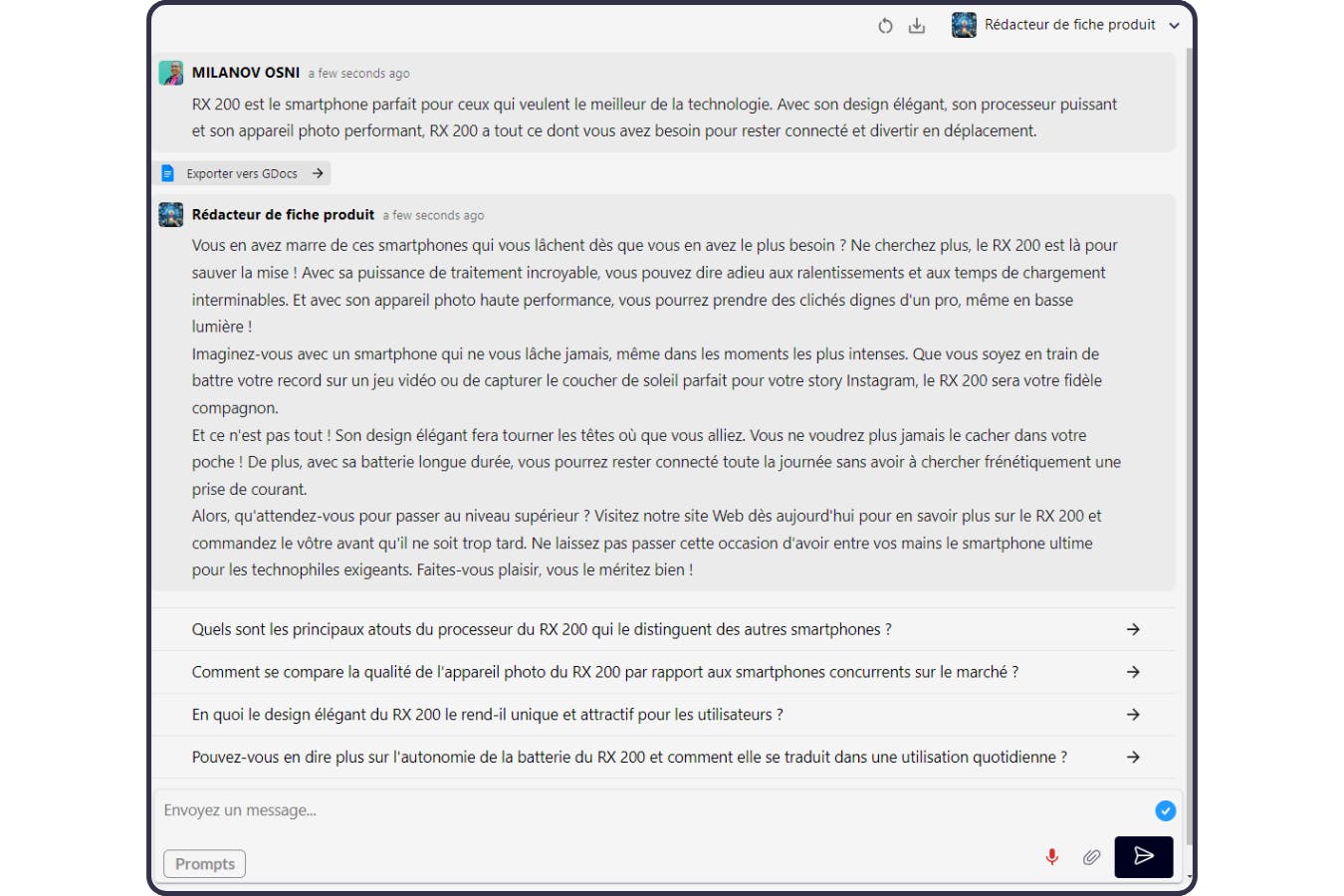Table of contents :
Discover how to apply branding voice on Swiftask
In today's business world, it is crucial for companies to stand out from the competition and create an emotional connection with their customers. Branding voice, or "voice of the brand," is a powerful tool that can help you achieve these goals. This comprehensive guide explains everything you need to know about branding voice. By following the advice in this guide, you can create a strong and consistent branding voice that will help your brand stand out and thrive.
Branding voice: what you need to know
What is branding voice?
Branding voice, also known as "voice of the brand," is the unique verbal personality of a brand. It is the way a brand expresses itself through its words, tone, and style. It is the essence of the brand distilled into language.
Branding voice is a crucial element of a brand's communication strategy. It allows for creating an emotional connection with customers, standing out from the competition, and building a strong and consistent brand image.
Characteristics of an effective branding voice
- Consistent: the branding voice should be used consistently across all brand communication channels, whether it's the website, social media, emails, or marketing materials.
- Authentic: the branding voice should reflect the brand's personality and values. It should not be artificial or forced.
- Distinctive: the branding voice should allow the brand to stand out from its competitors. It should be unique and memorable.
- Engaging: the branding voice should be engaging and encourage customers to interact with the brand. It should be clear, concise, and easy to understand.
Benefits of a strong branding voice
- Improved brand awareness: a strong branding voice helps customers better remember and recognize the brand.
- Building trust: an authentic and transparent branding voice helps strengthen customers' trust in the brand.
- Increased engagement: an engaging branding voice encourages customers to interact with the brand and follow its activities.
- Enhanced brand perception: A positive and consistent branding voice improves customers' perception of the brand.
How to develop an effective branding voice?
- Define the brand's values: What are the brand's fundamental values? What are its missions and objectives?
- Identify the target audience: Who are the customers the brand wants to reach? What are their characteristics and needs?
- Analyze the competition: How do the brand's competitors communicate? What are their strengths and weaknesses?
- Define the brand's tone and style: What tone does the brand want to adopt? Formal or informal? Serious or humorous?
- Create a style guide: A style guide ensures the consistency of the branding voice across all communication channels.
Branding voice is an essential element of a brand's communication strategy. By developing a strong and consistent branding voice, brands can create an emotional connection with their customers, stand out from the competition, and build a strong and lasting brand image.
In what areas can branding voice be used?
Field of application of branding voice
The brand voice, or "branding voice" in English, can be used in all areas of a company's communication.
On the website:
- The language used in the texts must be consistent with the brand voice. It must be clear, concise, and easy to understand.
- The tone of blog articles should be adapted to the target audience. For example, an article aimed at professionals will be more formal than one aimed at the general public.
- Slogans and marketing messages should be memorable and reflect the brand's personality.
On social media:
- The tone of the posts should be adapted to the platform. For example, a tweet will be more concise and informal than a blog article.
- The language used should be adapted to the target audience. For example, a brand addressing young people will use a more informal language than a brand addressing professionals.
- The visuals used should be consistent with the brand's visual identity.
In email communications:
- The tone of the emails should be adapted to the recipient. For example, an email addressed to a client will be more formal than an email addressed to a colleague.
- The language used should be clear and concise.
- The subject of the email should be clear and compelling to open.
In printed communication materials:
- The tone of brochures and leaflets should be consistent with the brand voice.
- The language used should be clear and concise.
- The layout should be attractive and easy to read.
During events:
- The tone of speeches should be adapted to the audience.
- The language used should be clear and concise.
- The presentation materials should be visually appealing.
It is important to use the brand voice consistently across all communication channels. This will create a consistent experience for customers and strengthen the brand's identity.
These tips help define a company's brand voice:
- Identify the company's fundamental values.
- Define the company's target audience.
- Determine the brand's personality.
- Create a voice style guide.
- Train employees on the brand voice.
Following these tips, companies can create a strong and consistent brand voice that will help them stand out from their competitors and build lasting relationships with their customers.
Concrete example of brand voice: Slack
Slack is a popular team communication and collaboration tool. Its brand voice is often described as friendly, casual, and approachable. This is reflected in all of its communication, including:
- Its website: Slack's website uses simple and direct language, with a lot of images and videos. It is also designed to be easy to navigate and use.
- Its social media: Slack is very active on social media, where it shares memes, GIFs, and other entertaining content. It also uses its social media to interact with its customers and answer their questions.
- Its blog: Slack's blog is an excellent source of information on teamwork and collaboration. It offers articles on a variety of topics, ranging from productivity tips to industry trends.
- Its customer service: Slack's customer service is known to be responsive and friendly. Slack agents are always happy to help customers and answer their questions.
Here are some concrete examples of how Slack uses its brand voice:
- On its website, Slack uses the slogan "Your work, made simple." This slogan is simple, direct, and reflects Slack's commitment to making work easier and more enjoyable.
- On Twitter, Slack often shares funny memes and GIFs. These posts allow Slack to connect with its audience on a personal level and show its humorous side.
- On its blog, Slack has published an article titled "How to get the most out of team meetings." This article provides practical tips to readers on how to make their meetings more effective.
- When a customer contacts Slack's customer service for assistance, the agent is likely to greet them with a message like "Hi! How can I help you today?". This friendly and helpful tone helps put the customer at ease and make them feel important.
Slack's brand voice is a key element of its success. It allows the company to connect with its target audience, stand out from its competitors, and create a loyal community.
Other examples of successful brand voices
- Nike: Inspirational, motivating, bold
- Apple: Minimalist, sophisticated, innovative
- Coca-Cola: Happy, nostalgic, authentic
- Google: Approachable, informative, helpful
- McDonald's: Family-oriented, fun, friendly
It is important to note that a company's brand voice must be authentic and consistent with its core
How to use branding voice on Swiftask?
To fully leverage the branding voice on Swiftask, it is advisable to create a dedicated bot with a personalized prompt. This prompt will integrate the user's branding voice, ensuring that the generated text perfectly reflects the brand's identity.

This approach offers several advantages:
- Consistent communication: The branding voice is consistently applied to all communications generated by the bot, ensuring a uniform and professional brand image.
- Personalization: The personalized prompt allows for adapting the branding voice to the specific needs of each user, taking into account their industry, target audience, and stylistic preferences.
- Time and efficiency gains: The bot automates the creation of text in line with the branding voice, allowing users to save time and focus on more strategic tasks.
Example of prompt for a writing bot with branding voice
- Objective: Write a product description for a new smartphone.
- Target audience: Young adults interested in technology.
- Format: Product description of 200 to 300 words.
- Tone and style: Dynamic, engaging, and humorous.
- Call to action: Encourage readers to visit the brand's website to learn more about the product and to order their own today.
Branding voice:
- Use simple and direct language.
- Highlight the unique features of the smartphone.
- Emphasize the benefits of the product for the customer.
- Adopt an enthusiastic and positive tone.
- Incorporate humorous elements to make the description more appealing.

Example prompt written by the user
RX 200 is the perfect smartphone for those who want the best of technology. With its sleek design, powerful processor, and high-performance camera, RX 200 has everything you need to stay connected and entertained on the go.
The result
Hey there, tech-savvy peeps! Are you tired of your outdated, glitchy phone? Well, say hello to your new best friend – the RX 200 smartphone! This bad boy is not just any ordinary phone; it's a powerhouse of awesomeness packed into a sleek and stylish design.
Let's talk power, baby! The RX 200 comes equipped with a lightning-fast processor that'll have you zipping through apps and multitasking like a pro. No more laggy videos or frustrating load times – this phone is here to keep up with your fast-paced lifestyle.
But wait, there's more! Say cheese to the camera that'll make you look like a pro photographer. With its high-performance camera, you'll be snapping Instagram-worthy shots and stunning selfies that'll make your friends green with envy. #nofilterneeded
And for all you binge-watchers and gamers out there, get ready to be blown away by the crystal-clear display and immersive sound quality. Whether you're streaming your favorite shows or battling it out in the latest mobile game, the RX 200 is your ticket to entertainment paradise.
But hey, we're not done yet! This baby is not just about looks and power – it's also got the brains to keep your data safe and secure. With top-notch security features, you can kiss those worries about cyber threats goodbye.
So, what are you waiting for? Don't let FOMO get the best of you. Head on over to our website to learn more about the RX 200 and snag yourself a piece of tech heaven. Trust us, your future self will thank you for it. Cheers to upgrading your tech game!

author
OSNI

Published
April 23, 2024